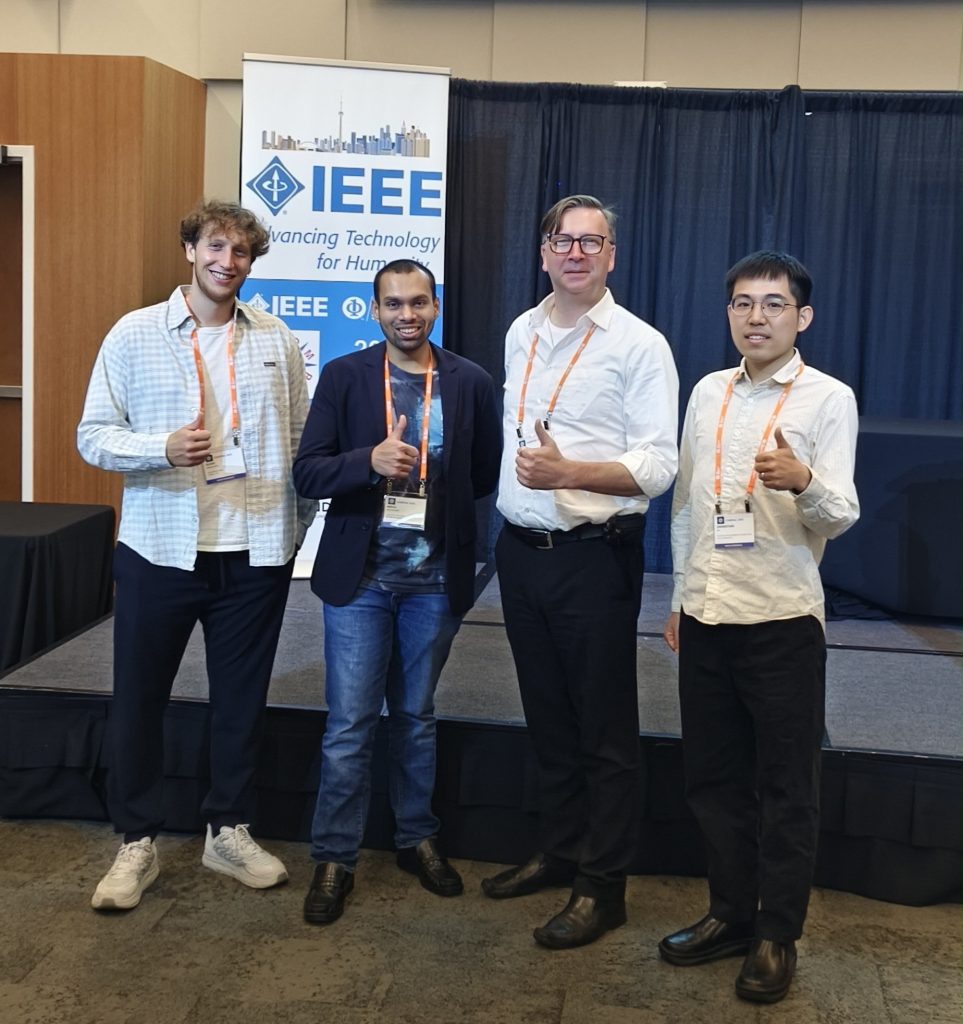
The EU-DREAM consortium is proud to announce a significant achievement in advancing the digitalisation of Europe’s energy systems. Our latest research, developed in collaboration with Links Foundation, was recently published and presented at the IEEE 49th Annual Computers, Software, and Applications Conference (COMPSAC 2025) in Toronto, Canada. This milestone reflects our commitment to creating secure, transparent, and consumer-focused energy solutions that align with Europe’s energy transition goals.
The paper, titled “A Blockchain-Powered Digital Twin Architecture for Consumer-Centric Energy Systems,” introduces a novel approach that combines Blockchain/Distributed Ledger Technology (DLT) with Digital Twin (DT) technologies. This integration addresses the growing need for trustworthy, interoperable, and user-centric digital infrastructures in the evolving European energy landscape. By leveraging blockchain for data integrity and digital twins for real-time simulation and optimisation, the EU-DREAM platform empowers consumers to actively participate in energy markets while ensuring privacy and compliance with EU regulations.
This research is particularly relevant as Europe accelerates its energy transition under initiatives such as the European Green Deal, REPowerEU, and the EU Action Plan on the Digitalisation of the Energy System. These frameworks call for secure and consumer-driven energy solutions, and the EU-DREAM architecture responds by providing a foundation for transparency, participation, and resilience. The system ensures that energy data is anchored on a permissioned blockchain for tamper-proof integrity, while digital twins enable predictive analytics and scenario planning to optimise energy use and flexibility.
The paper also explores practical applications of this architecture. For example, community energy trading scenarios allow households to share or trade surplus energy within local communities, supported by simulations that ensure safe and efficient grid operation. Participatory demand flexibility services enable consumers to contribute to grid stability without needing technical expertise, thanks to natural language interfaces that make interaction intuitive. Additionally, the platform supports inclusive microgrid solutions, ensuring that vulnerable or energy-poor households can benefit from equitable energy services.
Looking ahead, the EU-DREAM consortium will continue to enhance the platform by expanding AI-driven forecasting and optimisation capabilities, validating the architecture through Living Lab deployments across Europe, and refining user experience to ensure accessibility for all. Future work will also focus on maintaining compliance with evolving data governance and cybersecurity standards, reinforcing the platform’s role as a trusted enabler of Europe’s energy transition.
To learn more about this research, you can access the full paper on IEEE Xplore:
https://ieeexplore.ieee.org/abstract/document/11126857
Doi: 10.1109/COMPSAC65507.2025.00234 [doi.org].
